
Mission Statement:
"To advance through research, education and symposia, an increased public awareness of the Cape Fear region's unique history."

Ironclad Defender of the Cape Fear
CSS Raleigh
Cape Fear Historical Institute Papers
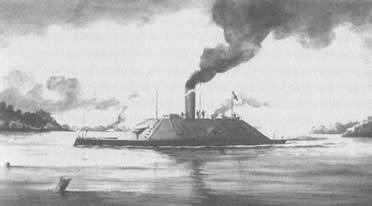
Ironclad CSS Raleigh, Defender of the Cape Fear:
Its keel laid down in the Spring of 1862 at James Cassidey’s
shipyard in Wilmington and construction delayed by the
shortage of materials, the CSS Raleigh was commissioned
by the Confederate States Navy on 3 April 1864 and under
the command of Lt. John Wilkinson. (an early image of
Wilkinson appears below)
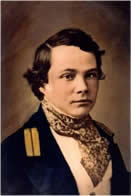
This officer had returned from Canada where he led "a
party of twenty-six officers of the different grades" to free
Southern prisoners at Sandsky, Ohio and capture the USS
Michigan on Lake Erie -- a brilliant operation had the secret
operation not been compromised.
Wilkinson's assignment to the CSS Raleigh
lasted only a few weeks as he was ordered to Richmond
to be part of an operation to free Southern prisoners
at Point Lookout.
Command of the CSS Raleigh fell to Lt. John Pembroke
Jones, an officer very familiar with local waters as he was
part of the US Navy’s Coast and Geodetic Survey
detachment in the 1850s which surveyed and charted
the coastline in this area.
The CSS Raleigh was a Richmond Class ironclad, designed
by Capt. John L. Porter, Chief Naval Constructor for
the Confederate States Navy. Its length was 150 feet
(172’ overall), a beam of 32 feet, drew 12 feet of water,
and armament consisted of 4-6” guns and perhaps a spar
torpedo. To man the vessel, 197 officers and crew, plus
a detachment of 24 marines were aboard.
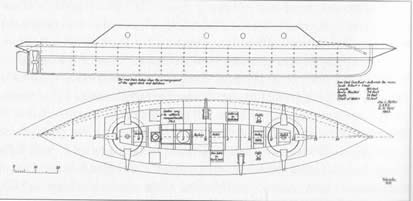
The steam engine of the wrecked blockade runner
Modern Greece blockade was briefly contemplated to
power the Raleigh, but to no avail. No plate indicating
engine origin exists, and one from the Schockoe Foundry
in Richmond may have powered this ironclad.
For the dual purpose of stealth and surprise, an eyewitness
account observed the hull, casemate, pilot house and
smokestack of the CSS Raleigh were all dark blue; gun
muzzles were painted black or simply left as unfinished iron.
This is from an eyewitness account.
Why the Ironclads:
Unable to match the US Navy in shipbuilding and high-seas
warships, Confederate naval strategy developed three main
categories: coastal/harbor defense; blockade breaking and
running; and river defense. The revolutionary ironclads could
devastate the wooden Northern ships which formed most of
the blockading squadrons, and ships like the Raleigh could
(and would) scatter blockaders fearful of
being rammed and sunk.
Ironically, this strategy of Secretary of the Navy Stephen
Mallory to defend the rivers and sounds with gunboats
emulated North Carolina’s colonists during the Revolution
as they faced formidable British naval power and a blockade.
The ports of Wilmington, New Bern and Edenton were
the sites of the fledgling North Carolina naval force.
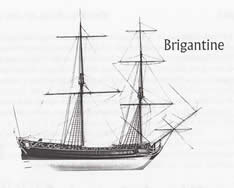
The brigs George Washington and Eclipse were built
at Wilmington in 1777, but two British warships at
Smithville (now Southport) effectively closed the port at
Wilmington, cutting off trade and sinking several ships
at anchor at Brunswick Town. Despite North Carolina’s
plans to build a navy to combat the British blockade,
the completed ships like the General Washington were
greatly outgunned, unable to leave port and later scrapped.
Nonetheless, Wilmingtonians in early January 1861 were well
aware of this closing up of the Cape Fear River by enemy
ships and were motivated to seize Forts Caswell and
Johnston to preclude it once the Star of the West armed
expedition to reinforce Fort Sumter was discovered.
The construction of the ironclads would further protect
the river and reinforce the forts; enemy ships would be
foolish to enter the Cape Fear where they would face
the guns of the CSS North Carolina and CSS Raleigh.
The First CSS Raleigh:
The first CSS Raleigh was a small, iron-hulled and prop-
driven steamer operating on the Albemarle & Chesapeake
Canal early in the war. Under the command of Lt. J.W.
Alexander, her entire service was in coastal North Carolina
and Virginia waters. The Raleigh supported Forts Hatteras
and Clark in August 1861, and defended Roanoke Island
in early February 1862. The following month she was a
tender to the CSS Virginia during its fight with a Northern
ironclad at Hampton Roads. In May 1862 she steamed
up the James River for patrol service and was renamed
“Roanoke,” then destroyed by retreating Confederate
forces on 4 April 1865.
Quickly to Battle:
With the armor installed and anxious for action against the
blockading fleet off Smithville, the CSS Raleigh saw its first
test on 6 May 1864, a little over a month after its
commissioning. Flag-Officer William F. Lynch, naval
commander at Wilmington, organized a blockade-
breaking flotilla consisting of the CSS Raleigh and the
lightly-armed steamers Yadkin and Equator, and they
steamed across the bar on that afternoon. Following
them at a distance was a blockade runner rightly
anticipating the enemy fleet being scattered.

It would be evening before the USS Britannia sighted
the flotilla, alerted other blockaders with rockets and retreated.
The CSS Raleigh fired and made at least one hit before the
Britannia pulled out of range, and this action allowed the
blockade runner to escape to sea.
About midnight the Raleigh came across the USS Nasemond
and fired upon it before it too drew out of range, the
Northern ships experiencing a nervous case of “ram fever.”
While out at sea the CSS Raleigh was spotted by the
incoming runner “Annie” which took advantage of the
enemy fleet’s scare and steamed into past Fort Fisher
with its cargo.
By dawn a reporter for the Wilmington Daily Journal was
monitoring the action from atop the fort’s 54-foot Mound
Battery. He wrote: “Daylight first disclosed the small steamers
Yadkin and Equator about two miles from shore awaiting orders
from the Raleigh…Soon the horizon was clear and we discovered
the iron-clad eight miles to sea, in quiet possession of the
blockading anchorage.”
The Raleigh first spotted the screw-steamer USS Howquah
and started a morning of futile ramming attempts and long-range
dueling – getting within a mile or so of the enemy vessel.
All told, 4 or 5 enemy ships tried to engage the Raleigh,
but to no effect except for two shots from the Howquah
bouncing off the Raleigh’s armor. The ironclad put a
round through the smokestack of the Howquah before
the Raleigh considered turned homeward to beat the tide.
By 7AM the tide was high, but to continue the engagement
the Raleigh would need to wait twelve hours for the next high
tide to cross the bar. The defenders of Fort Fisher saw the
Raleigh “steam[ing] defiantly around [the enemy’s blockading]
anchorage, eight miles from the guns of Fort Fisher, not one
dared to take up the gauntlet.”
At 7AM, the Raleigh turned its bow toward the shore, the
“little trio formed in line some five miles out, and steamed
slowly in, the Confederate flag flying saucily above
their decks.” (Peebles, p. 48)

As the Raleigh steamed across the bar at New Inlet with the
enemy ships lying back at a respectful distance, the guns of
Fort Fisher “rang out nine times in salute.”
The Federal impression, according to author Peeble’s, is that
“they seemed well enough impressed with the ironclad’s
“most formidable and dangerous” appearance, further
describing the ironclad as “fast,” a good “6 or 7 knots,”
and able to turn “very quickly.” The captain of the USS
Howquah also reported that the ironclad carried “a torpedo
on her bow,” such as the CSS Atlanta had.” Another officer
noted that “if it should come out again…he doubted the
ability “of any wooden vessel on this station to contend
successfully” against the Raleigh.
Grounding:
Shortly after crossing the bar the ironclad grounded on a
treacherous shoal or “rip,” and valiant efforts to refloat her
proved futile. She broke in two on the falling tide as the sheer
weight of its armor cladding crushed the timbers. A later court
of inquiry found that the Raleigh was the victim of shoddy
construction, though her action prior to grounding was exemplary.
Had the CSS Raleigh Survived:
It is worth considering the effect the CSS Raleigh might have
had if the treacherous rip had not caught her hull, and how her
guns could have added to Fort Fisher’s defensive firepower
during the coming invasion.
As noted by author Martin Peebles, “The ability of an ironclad
such as the Raleigh to stop the passage of more than fifty ships
[past Fort Fisher] is extremely doubtful, but the attack was not
to come through New Inlet [as]…the inlet was too shallow for
the larger Federal warships to run through. An ironclad in the
river [behind the fort] would have provided the Confederates
with a much more critical advantage.
The loss of the ironclads was more critical than [General W.H.C.]
Whiting could have foreseen, especially after the second
bombardment. In addition to the fort’s one remaining land face
weapon and the [CSS] Chickamauga’s 85-pounder, an ironclad
would have added four more heavy guns to the fort’s defense.
As demonstrated by the Raleigh’s attack of May 6-7, the
ironclad could have held its range over the peninsula
from the river’s deepest channel.”

Nevertheless, a new 226’, twin-turreted ironclad under
construction at Beery’s Shipyard on Eagles Island, the CSS
Wilmington, could not be finished in time to prevent Fort Fisher’s
reduction and the only remaining warship here was the lightly-
armed raider CSS Chickamauga. The Wilmington was burned
at its stocks on February 21, 1865, when Southern forces
evacuated the city. The ironclad was about 95 percent finished
at the time, and her Columbus Naval Works machinery was
new and ready for installation.
Author William Trotter offers this: “Had Braxton Bragg been
smart enough to hold onto the outer Cape Fear defense until
the ironclad [CSS Wilmington] was launched, Admiral Porter
and General John Schofield might never have taken Wilmington,
even after the fall of Fort Fisher.
James L. Cassidey, Constructor of the CSS Raleigh:
“James L. Cassidey (1792-1866) arrived in Wilmington in the
mid-1820s and purchased two lots on the north side of Church
Street in 1828, both running from Front Street to the river.
He apparently began construction on his Federal-era house
immediately. The house may have had its gambrel roof added
in 1910, and is now known as the Cassidey-Harper House
at 1 Church Street. A later owner was Capt. James Thomas Harper.
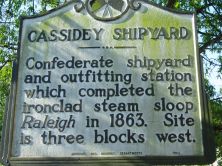
It is not clear when Cassidey, a ship’s carpenter, actually
began the shipyard, but it appears to be by 1837. In the October
8, 1846 “Commercial,” Cassidey was advertising a “Wilmington
Marine Railway” with the ability to take vessels up to 400 tons.
After the war he merged operations with Benjamin Beery’s
facility at the foot of nearby Nun Street, with the business
renamed Cassidey & Beery. The shipyard was taken over by
Capt. S.W. Skinner in 1881; in 1911 the facility became
known as the Cape Fear Machine Works, and in 1921,
Broadfoot Iron Works.
According to author James Sprunt, “A ship full-rigged and
beautiful to look upon was built at [Cassidey’s] shipyard….to
be taken to Raleigh to the grand Whig convention rally of the party
in North Carolina on October 5 [1840]. Constitution was the
name of the ship. James [Cassidey] was on deck as her captain,
and the crew were Don MacRae, John Hedrick, John Marshall,
Eli Hall, John Walker, and Mike Cronly – then youths of fifteen
to eighteen years.
Dr. John Hill, from the residence of General James Owen….
addressed the crew of the ship and the enthusiastic throng
assemble there, and the boat then proceeded on her trip. By
rail she was taken to Goldsboro and thence by wagon, for lack
of rail, to Raleigh. The ship was left in Raleigh to be given to
the county represented in the convention which in the
presidential election should give the largest increase in the
Whig vote over the Governor’s poll, in proportion to population.
Surry County got the ship.” (Sprunt, p. 176)
The Shipyard Area:
Other shipyards in the area, John K. McIlhenny’s was circa
1833 at the foot of Queen Street. Skinner’s Shipyard was at
the foot of Church Street, circa 1911.
The Nicholas W. Schenck Diary notes: “Jas. Cassidy – occupied
half the square – high ground garden on Front Street.” End of street
was the “railway for vessels.” Today’s 1 Church Street overlooks
where the railway was located. The shipyard wharves extended
from the railway northward to Ann Street. Beyond Ann Street
were wharves for rosin, tar and lumber storage. To the left of the
railway at Church was a blacksmith and machine shop, and the
“Baptizing Dock” at water’s edge was a favorite
swimming area for boys.
John Pembroke Jones, Commander of the CSS Raleigh:
The second and last commander of the ironclad CSS Raleigh
was born 28 February 1825 at Pembroke Farm near Hampton,
Virginia, the son of John and Mary Booker Jones. He was
educated at the noted John Carey School of Hampton and
later attended William and Mary College. After one year
(in 1841) he received an appointment to the US Naval
Academy at Annapolis where he was acclaimed for his
mathematical mind. In his senior year (February, 1847)
his class was allowed to participate in the siege of Buena
Vista, thus making him a veteran of the war with Mexico.
After graduation he served in the coast surveys of North
Carolina and Virginia, and while charting the mouth of the Cape
Fear River he met and married Jane Vance London of
Wilmington. His new wife died shortly after bearing him
a son, John Pembroke Jones, Jr., born 15 December 1858.
On duty aboard the USS Congress on the African coast when
war broke out, he was furloughed home with a severe attack
of African fever. Upon reaching New Orleans, he telegraphed
his resignation and volunteered for service in the newly-formed
American Confederacy.
Jones served as an officer aboard the ironclad CSS Virginia
during its second battle with a Northern ironclad, and also
commanded the Confederate Navy ironclad, the CSS Georgia.
Probably in late March or early April, 1865, Jones was on
special service for Secretary of the Navy Stephen Mallory and
ordered to report to Captain John Newland Maffitt at Galveston,
who was to “purchase two steamers to take supplies to [General
Robert E.] Lee on an urgent basis, one for a run up the York
River and the other up the James River.”
Jones had with him money in specie checks and was accompanied
by two experienced Virginia river pilots, but found upon
reaching the Mississippi that the war in the east had ended.
Jones eventually found Maffitt who was to set sail for Liverpool,
and went as far as Halifax where Jones went ashore to
return to Virginia.
In 1864 he had married Mary Willis of Savannah who bore
him another son, Edward Jones Willis (who took his
grandfather’s name), and from Halifax he settled on Airlie
Farm, Fauquier County, Virginia. He later surveyed the
mouth of the Rio de la Plata River for the Argentine
Republic, and spent several years in Europe
recovering from ill-health.
He then made his home at Pasadena, California, where
during a visit of the United States fleet to San Francisco
he was unable to attend the fleet banquet – a vacant chair
was placed at the head of the table in his honor as the
oldest living graduate of the United States Naval Academy.
John Pembroke Jones died on 25 May, 1910 in Pasadena.
His tombstone at St. John’s Episcopal Church at Hampton
reads: “A Gallant Officer, A Cultured Gentleman, And a
Man Greatly Beloved by All Who Knew Him.”
Capt. Jones’s son, J. Pembroke Jones, Jr. received his early
education at Gen. Raleigh E. Colston’s accalimed Cape Fear
Academy in Wilmington. He married Sadie Wharton Green
of Fayetteville in October 1884, and was president of the
Cape Fear Rice Milling Company of Wilmington. They owned
the Gov. Dudley Mansion as well as what is now Airlie Gardens,
and built the lavish Italianate-styled “Bungalow” in Pembroke
Park, in what is now Landfall.
Sources:
The Confederate Ironclads, Maurice Melton, SB Books, 1968
CSN Research Guide, T.T. Moebs, Moebs Publishing, 1991
Narrative of a Blockade Runner, John Wilkinson, 1876
Land of the Golden River, Vol. 2 & 3, Lewis Philip Hall, 1980
History of a Civil War Ironclad , M. Peebles, Thesis March 1996
Chronicles of the Cape Fear, James Sprunt, Edwards & Broughton, 1916
Wilmington, NC, Architectural and Historical Portrait, Tony Wrenn, 1984
High Seas Confederate, Royce Shingleton, USC Press, 1994
Confederate Veteran, November 1910
©2006 Cape Fear Historical Institute